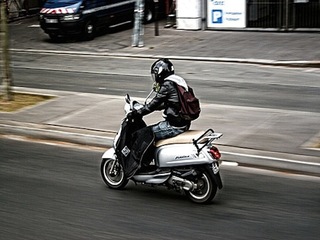
When it launched in 2010, Uber was a revolutionary new kind of service: an on-demand transportation app, one which would allow users to connect with a luxury car service directly from their smartphones. The idea was that it would be more convenient, and reliable, than trying to get a taxi in a big city like San Francisco. And it worked. The service quickly expanded from San Francisco, and it now operates in 35 markets all over the country.
But Uber, it seems, has been a victim of its own success, as it led to a rash of new services, including ride-sharing companies like Lyft and Sidecar, which are cheaper to use than Uber since they do not use drivers who are licensed to operate commercial vehicles.
Despite using drivers who have not been screened or insured, many people are still willing to go for the cheaper option. So what do you do if you are Uber? You cut prices to compete.
Uber is lowing prices on its uberX fleet, it was announced Wednesday, in order to make them 10% cheaper than a taxi.
UberX, which first launched in July 2012, is a fleet made of mostly hybrids, as well as some smaller sedans. The service was already Uber’s way of competing with ride-sharing service, and was considered a lower cost option to Uber’s standard Black service.
“The launch of our eco-friendly uberX option last July made Uber a more affordable choice for everyone. But what would happen if uberX were actuallycheaper than a taxi? What would it mean for your daily routine if you could get a premium experience without paying any premium at all?” Uber wrote in a blog post.
“uberX at cheaper-than-taxi pricing means never, ever waiting for a bus in the rain or walking alone at night. It means $8 from FiDi to AT&T Park, $15 from the Marina to the Mission, and $50 from North Beach to SFO. It means a single, cost-effective solution for dependable pickups in minutes, 24 hours a day, all over the Bay.”
This not the first time that Uber has decided it needed to cut prices to stay competitive. In January it lowered the prices on its standard Uber Black car service by 10%.
But Uber has another move up its sleeve, apparently deciding that if it can’t beat them, it might as well join them.
In April Uber revealed that it it was planning to start its own ridesharing service in markets where it already been given approval by regulators.
The company also addressed the issues of being able to compete with those services that use non-regulated drivers.
“Over the last year, new startups have sought to compete with Uber by offering transportation services without traditional commercial insurance or licensing. Uber refrained from participating in this technology sector — known as ridesharing — due to regulatory risk that ridesharing drivers may be subject to fines or criminal misdemeanors for participating in non-licensed transportation for compensation,” the company said.
“In most cities across the country, regulators have chosen not to enforce against non-licensed transportation providers using ridesharing apps. This course of non-action resulted in massive regulatory ambiguity leading to one-sided competition which Uber has not engaged in to its own disadvantage.”
About Uber
Since launching in 2009, Uber has expanded operations across the country, and to other parts of the world. The San Francisco-based company has operations in Amsterdam, Atlanta, Boston, Chicago, Dallas, Denver, the Hamptons, London, Los Angeles, Minneapolis, New York City, Paris, Philadelphia, Phoenix, San Diego, San Francisco, Seattle, Sydney, Toronto and Washington D.C.
The on-demand car service recently scored a major victory in New York, when the Appellate Division’s First Department ruled that the City’s e-hail pilot program, which will allow users to hail yellow cabs from a smartphone app, can proceed. The ruling put an end to a temporary restraining order that had blocked the program earlier this year.
“It’s pretty rare that the transportation sector sees so much progress and justice on the same day. UberTAXI is fully up and running for yellow cabs and we look forward to helping New Yorkers hail green cabs too,” Uber CEO Travis Kalanick told VatorNews at the time.
(Image source: http://www.nytimes.com)




















